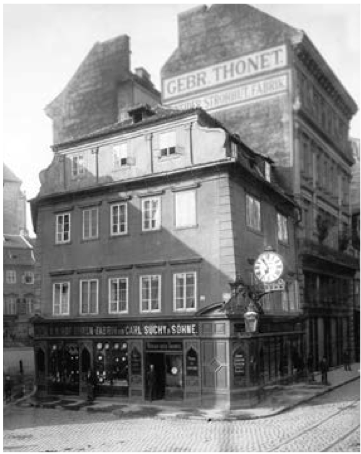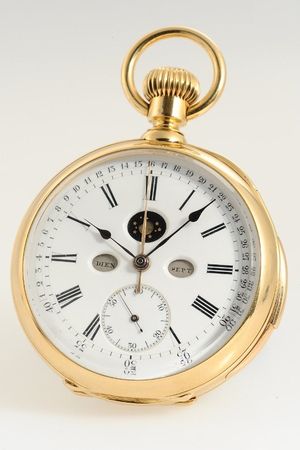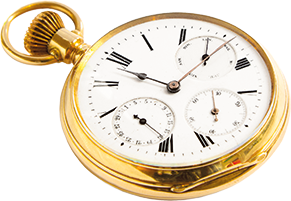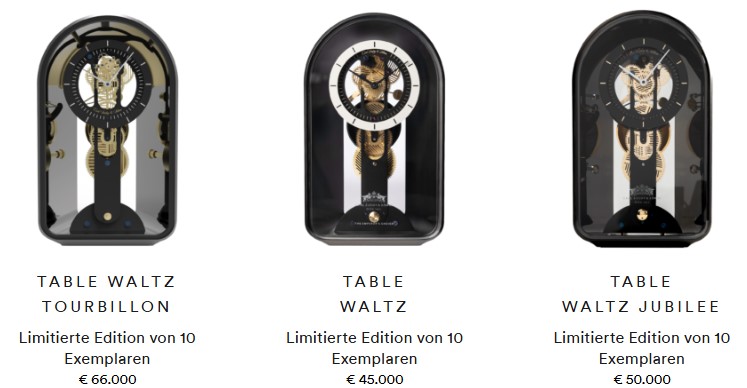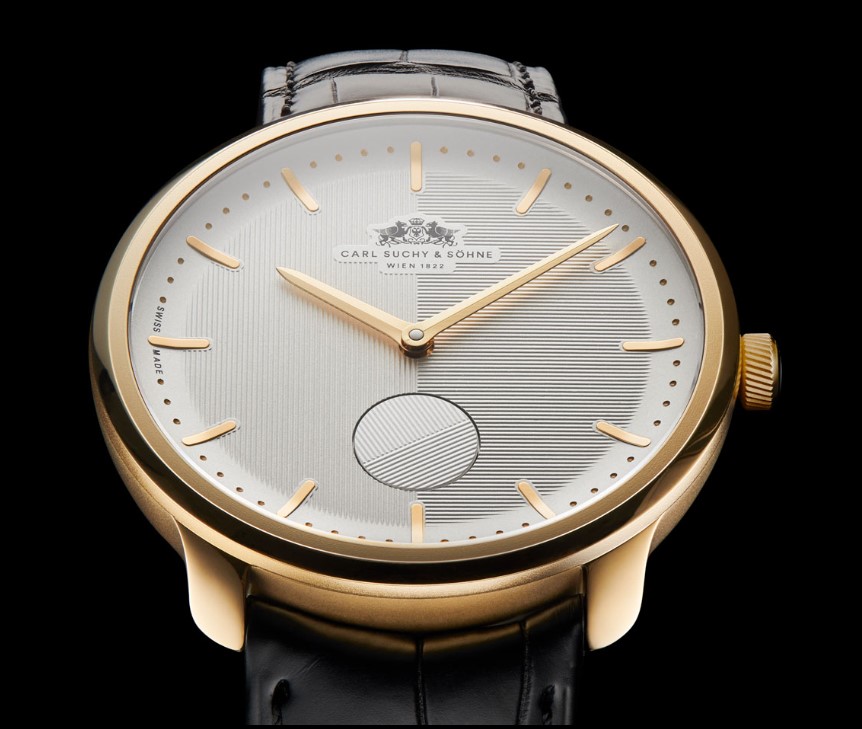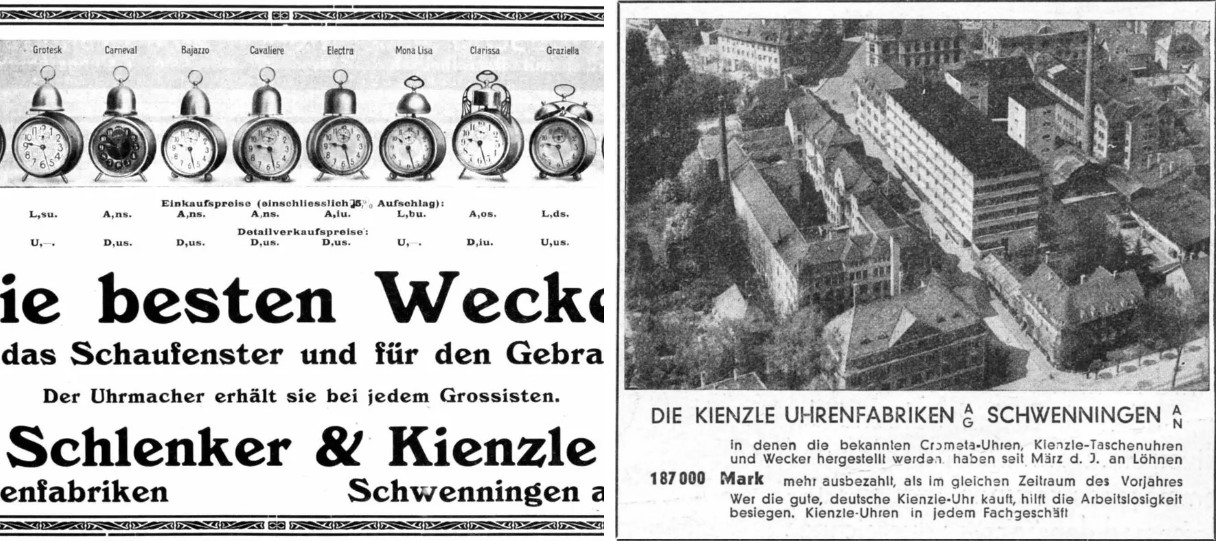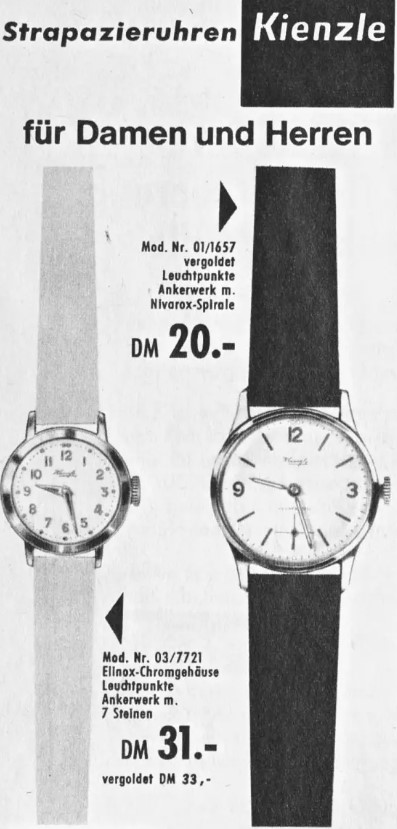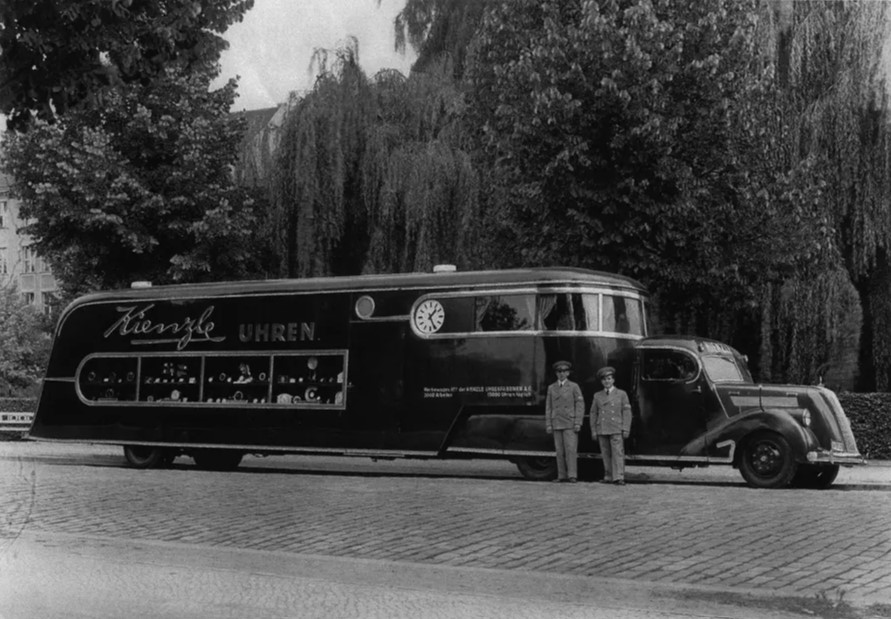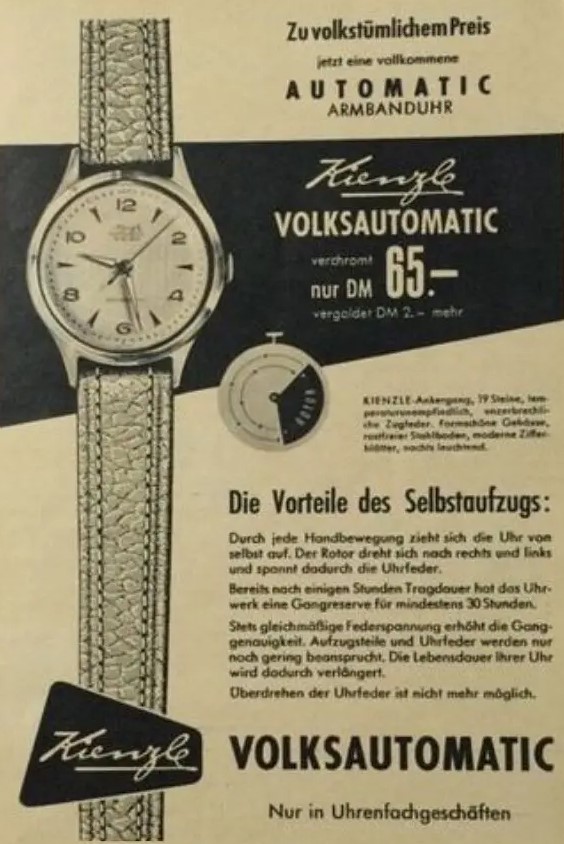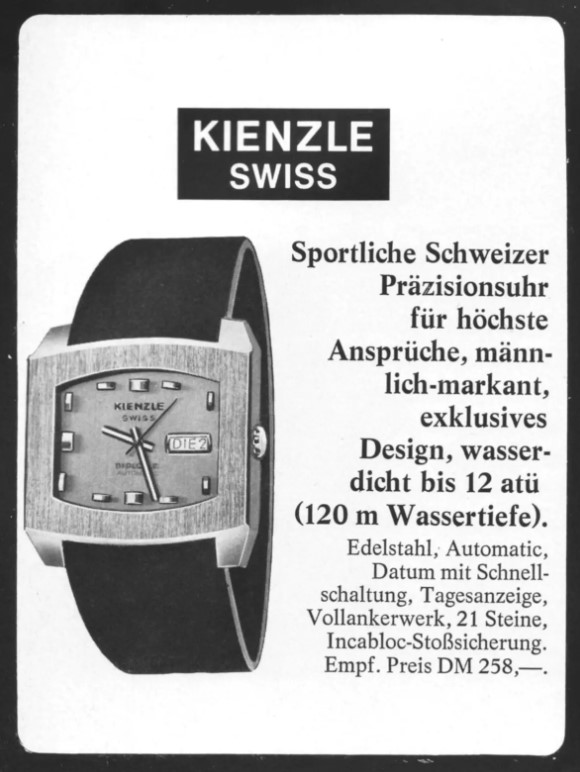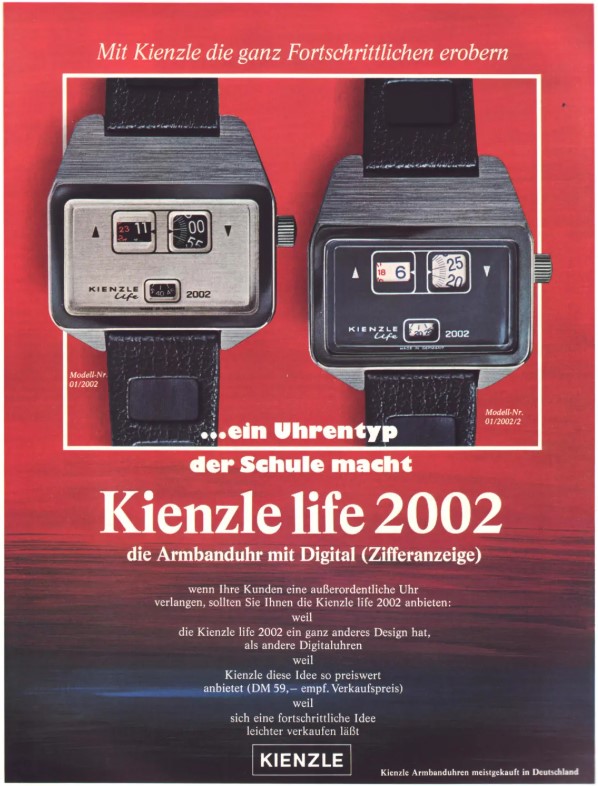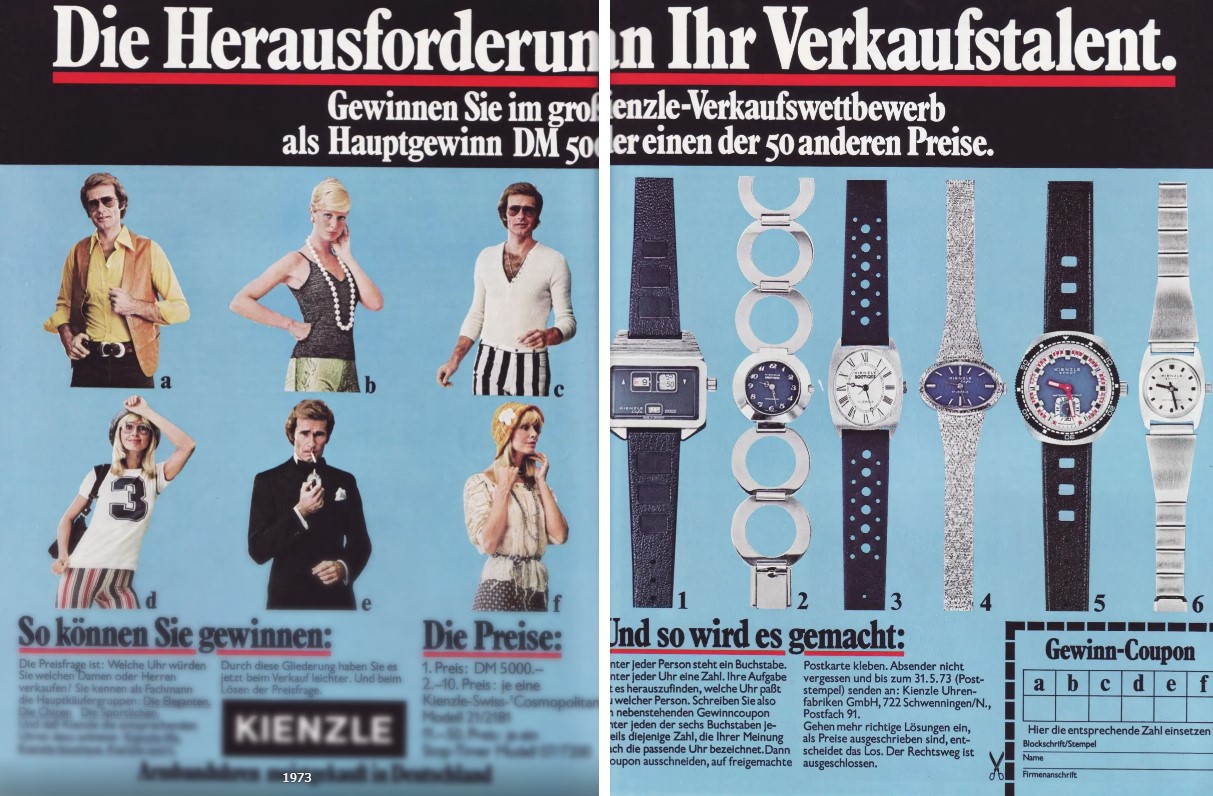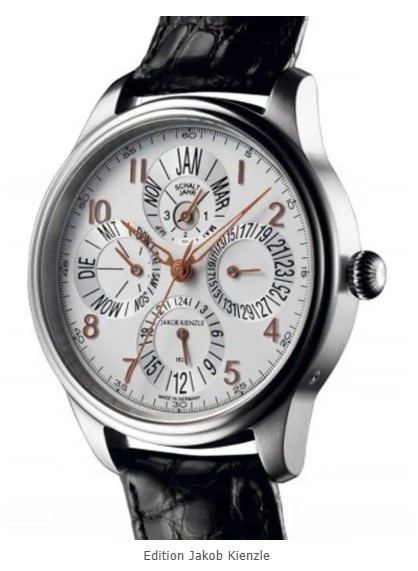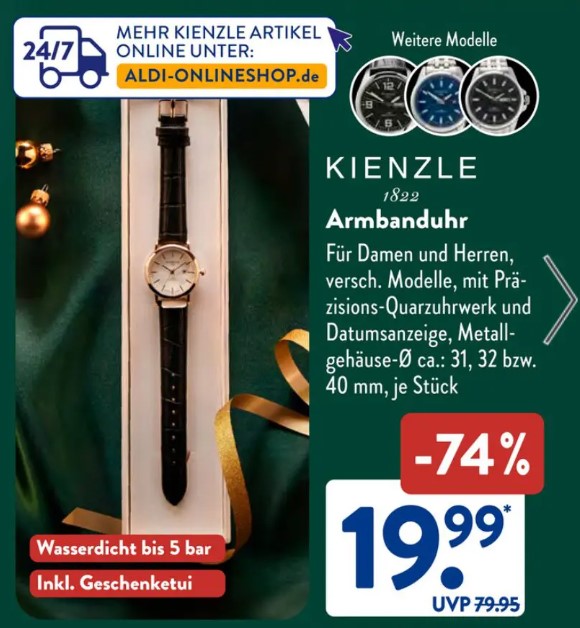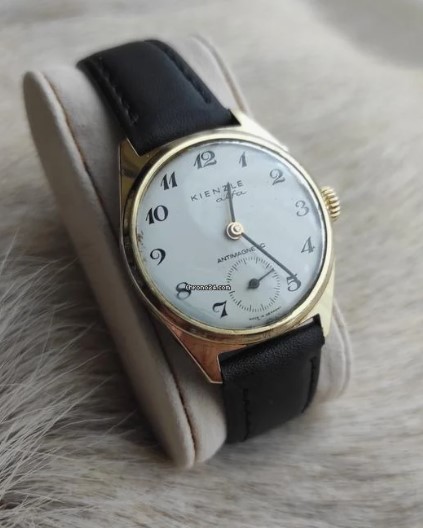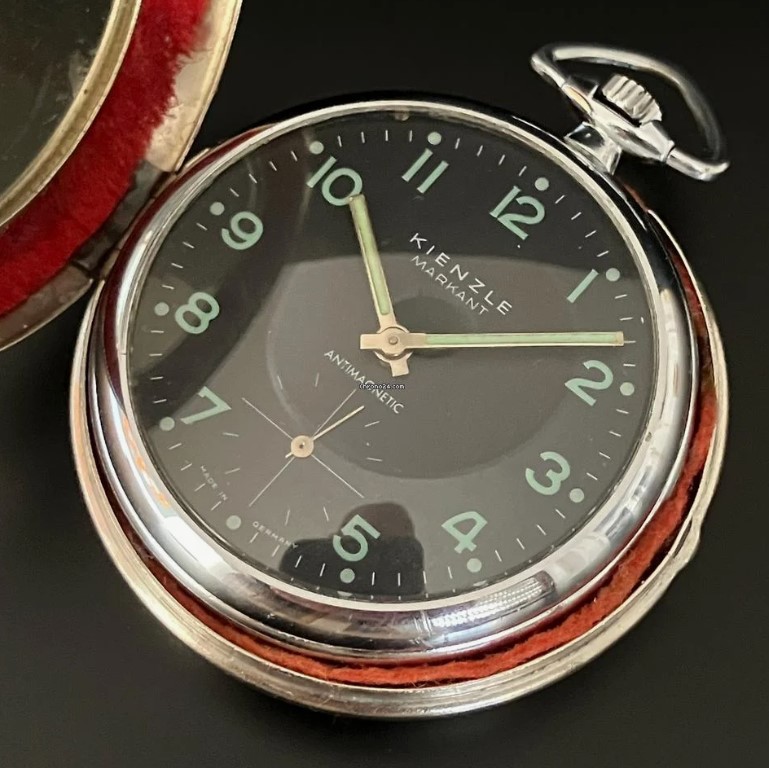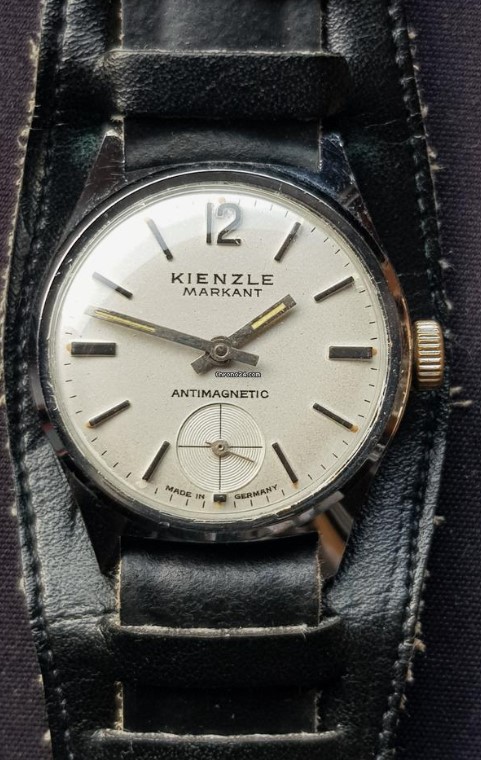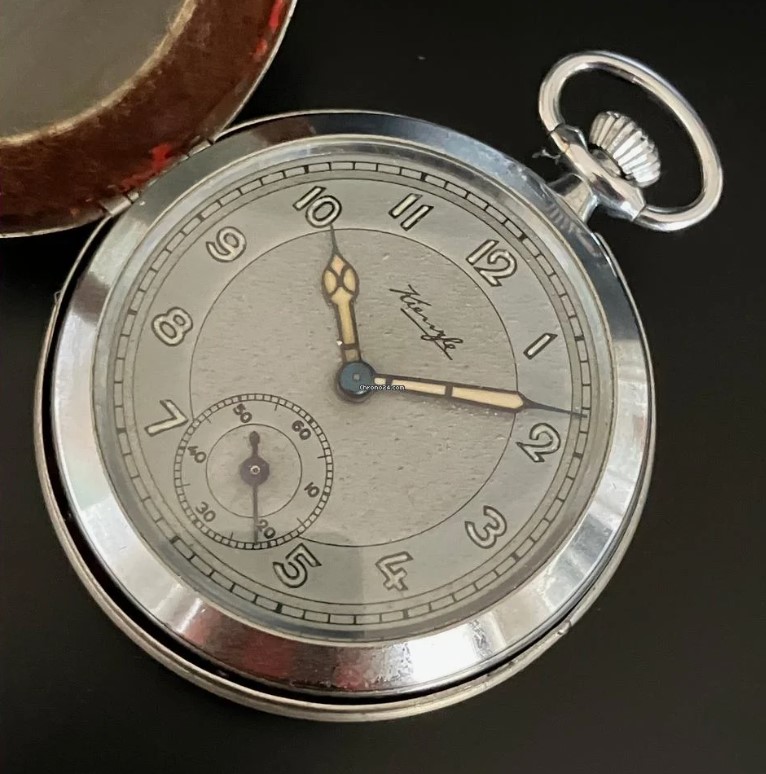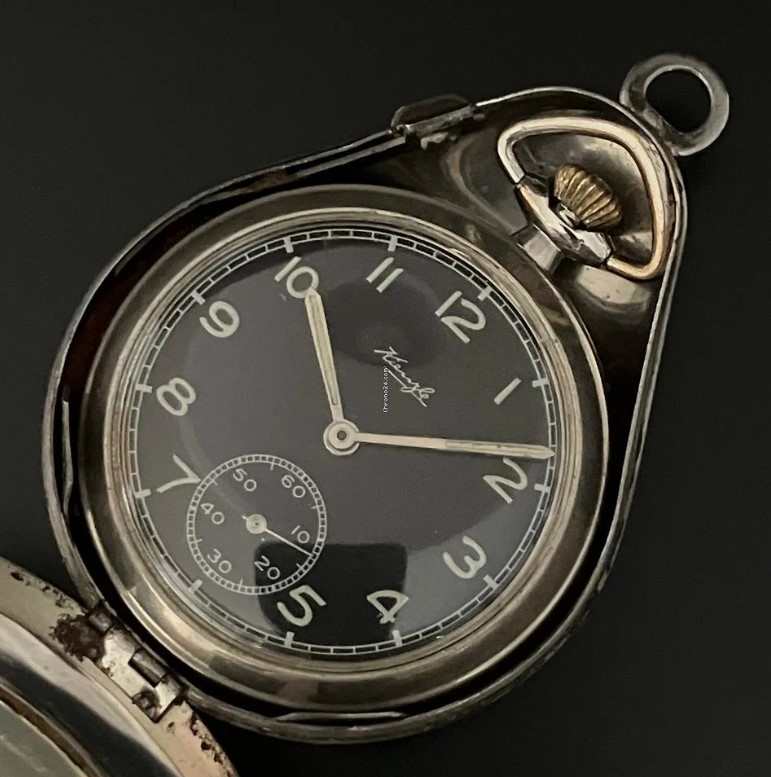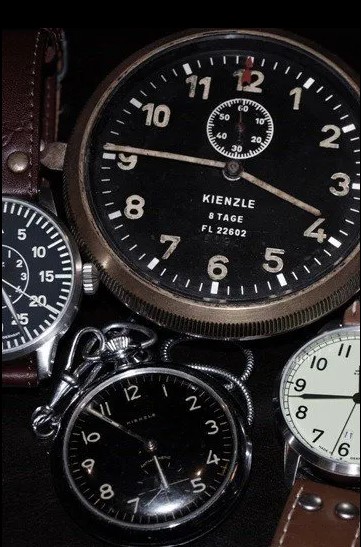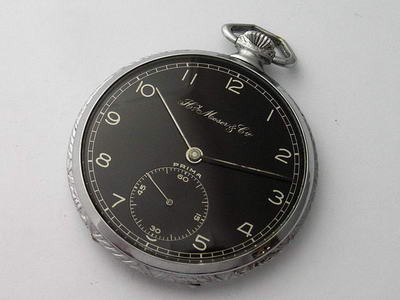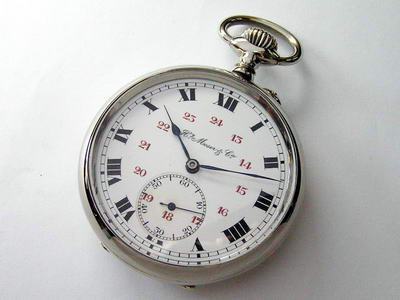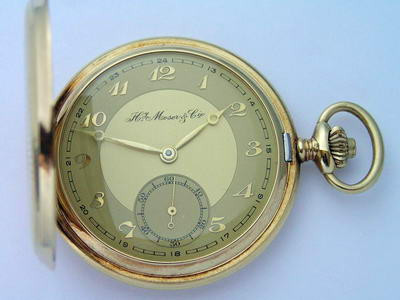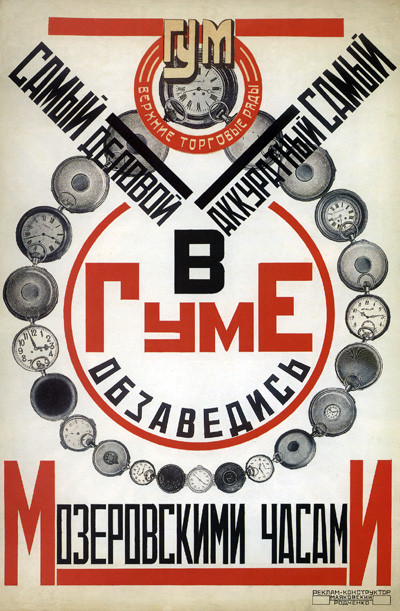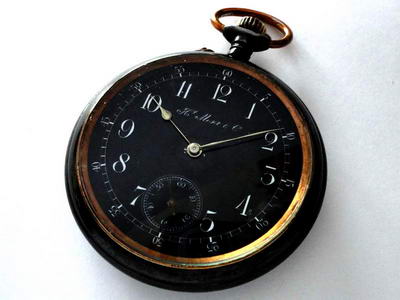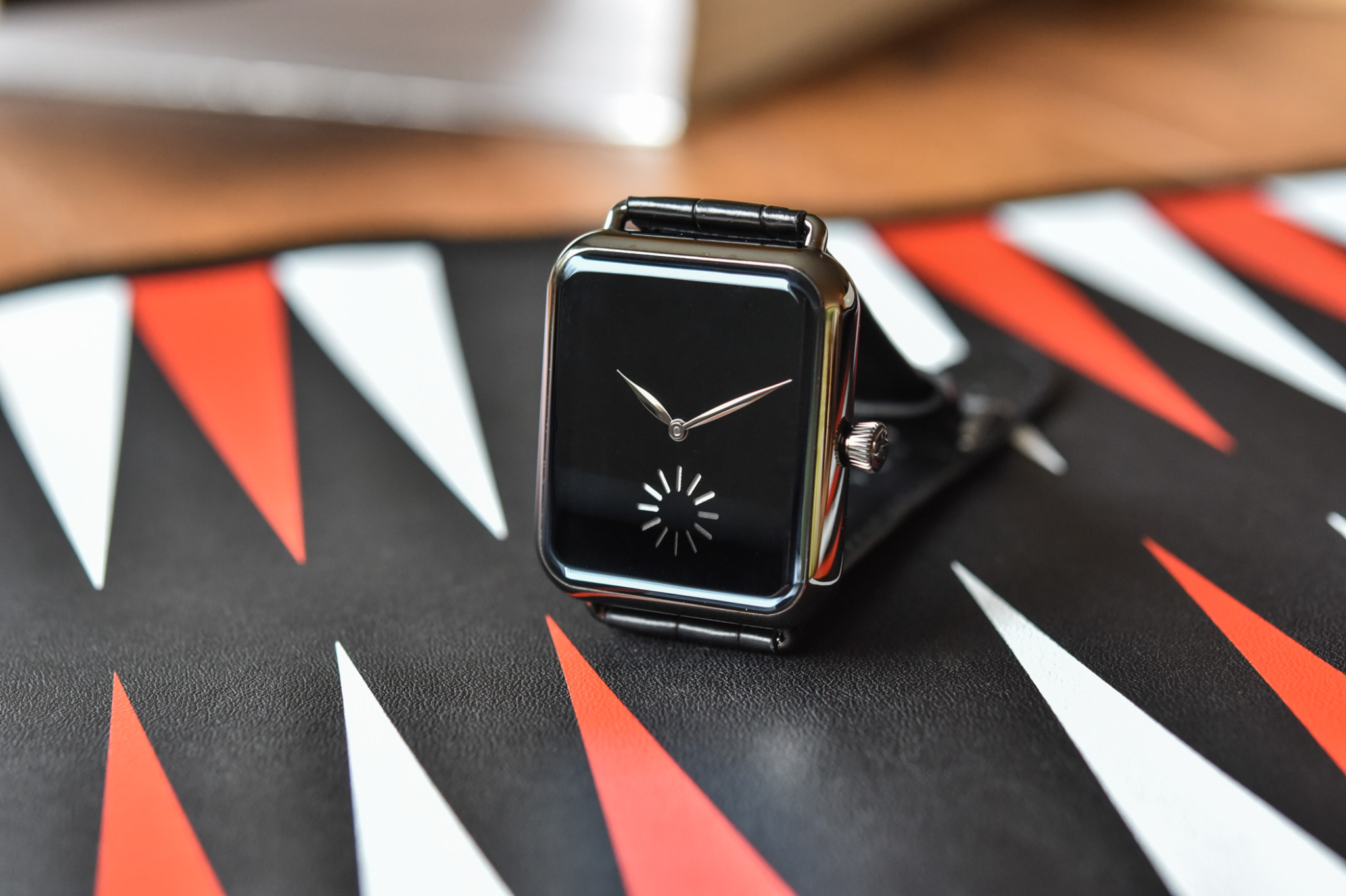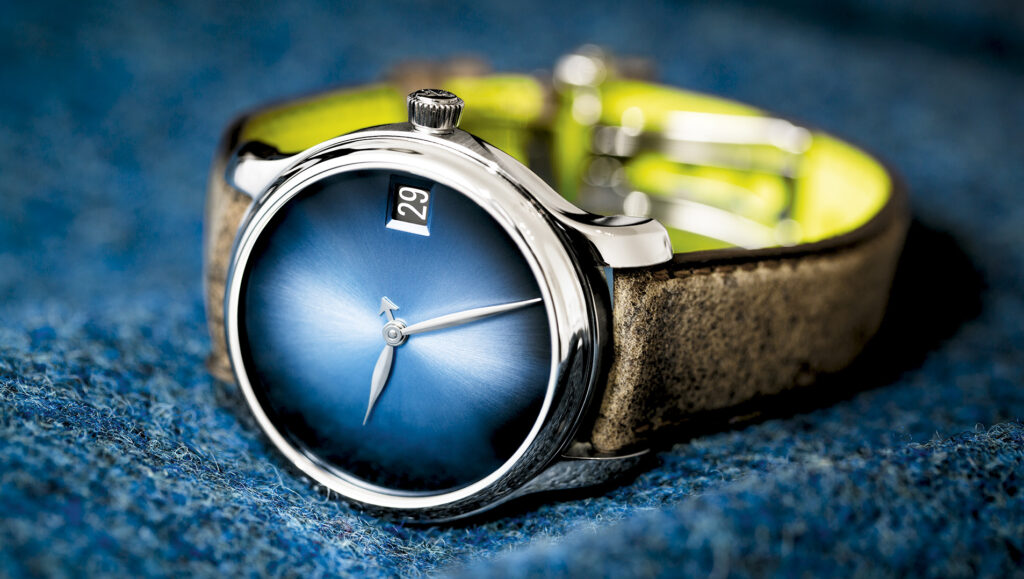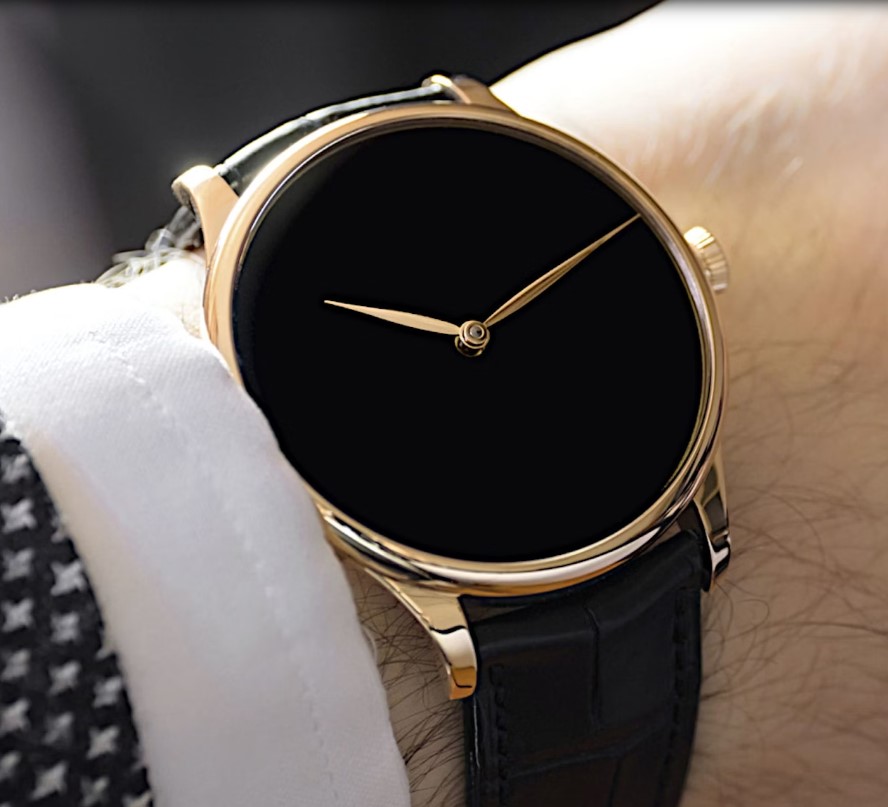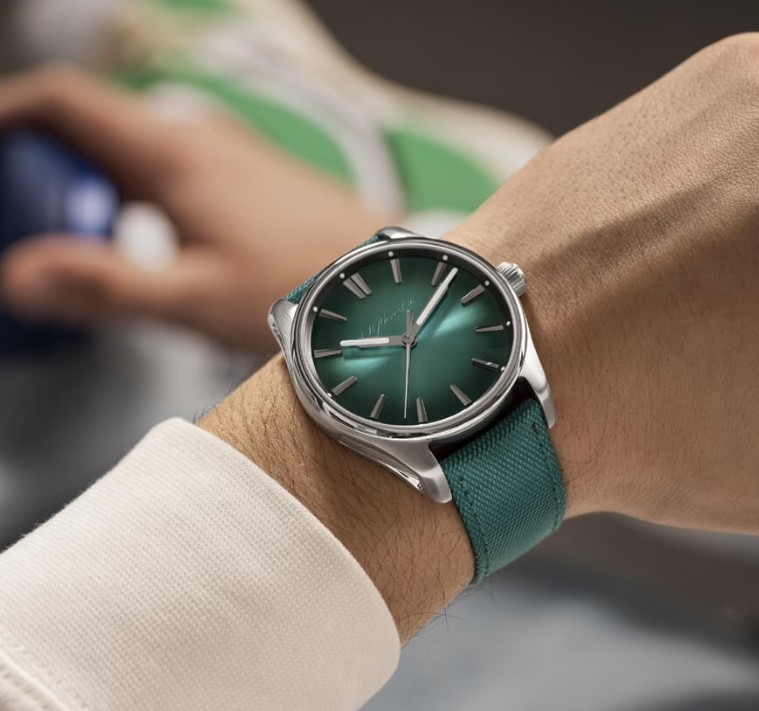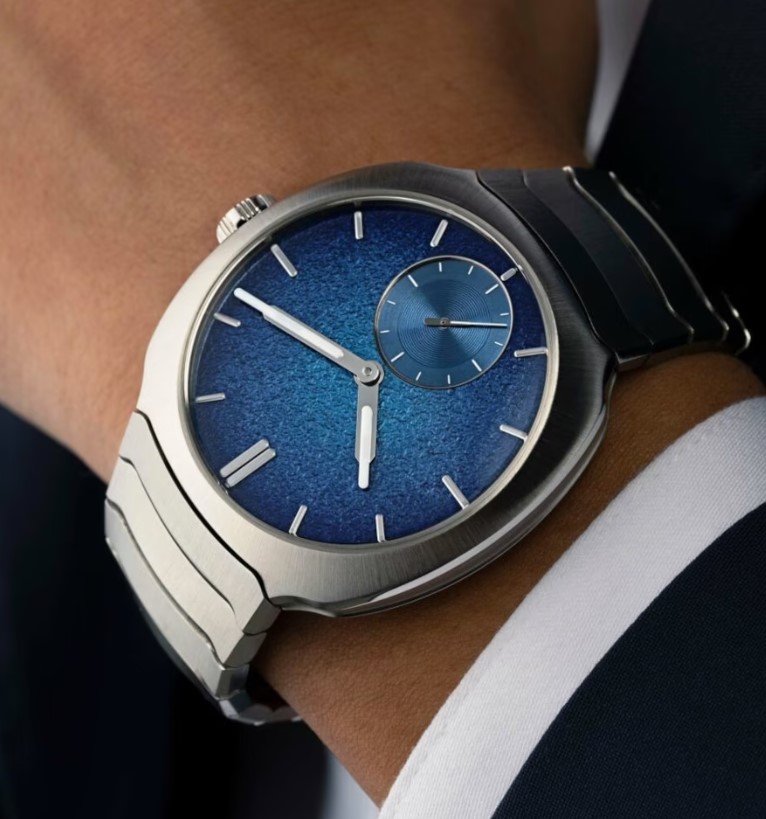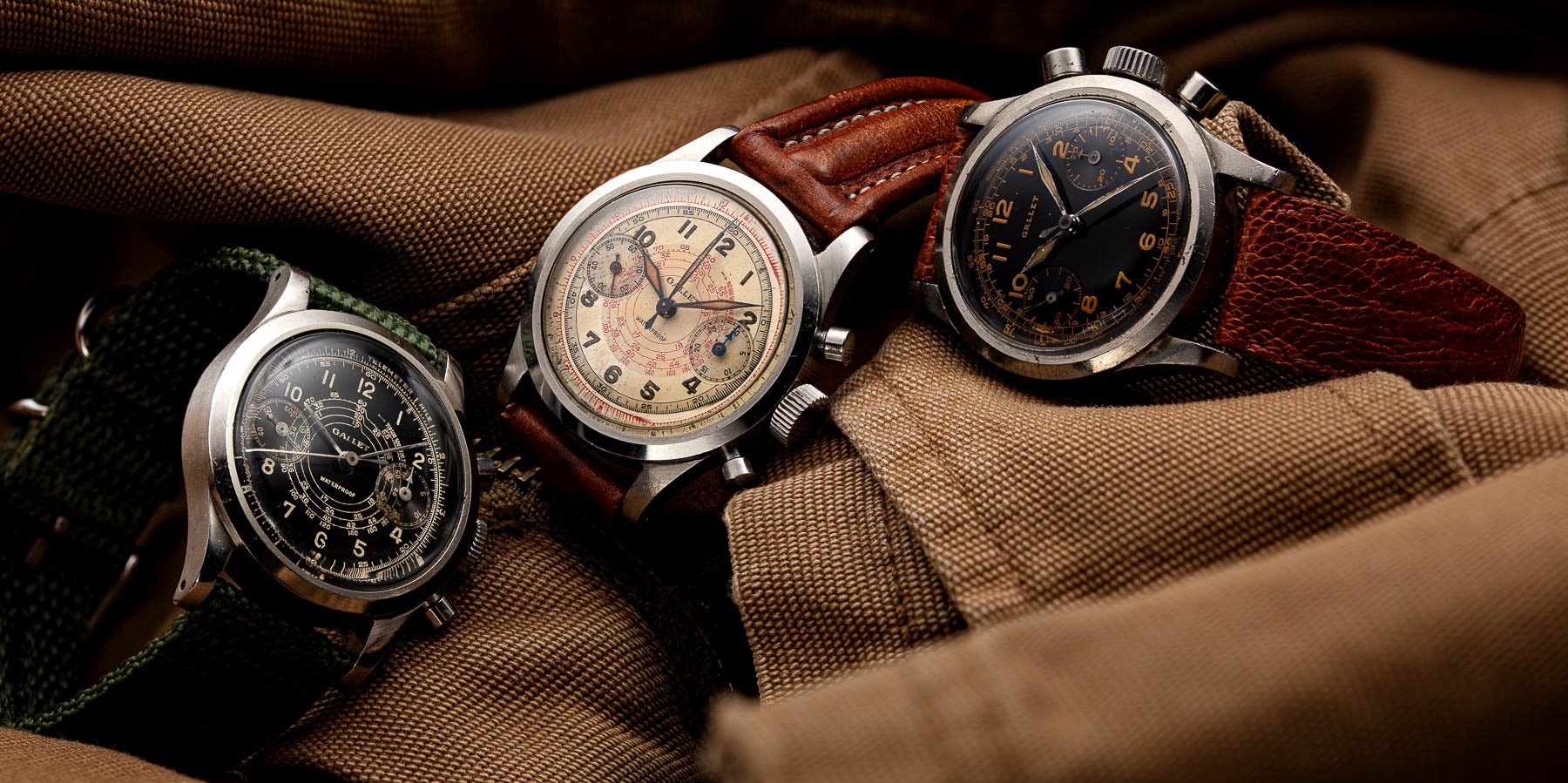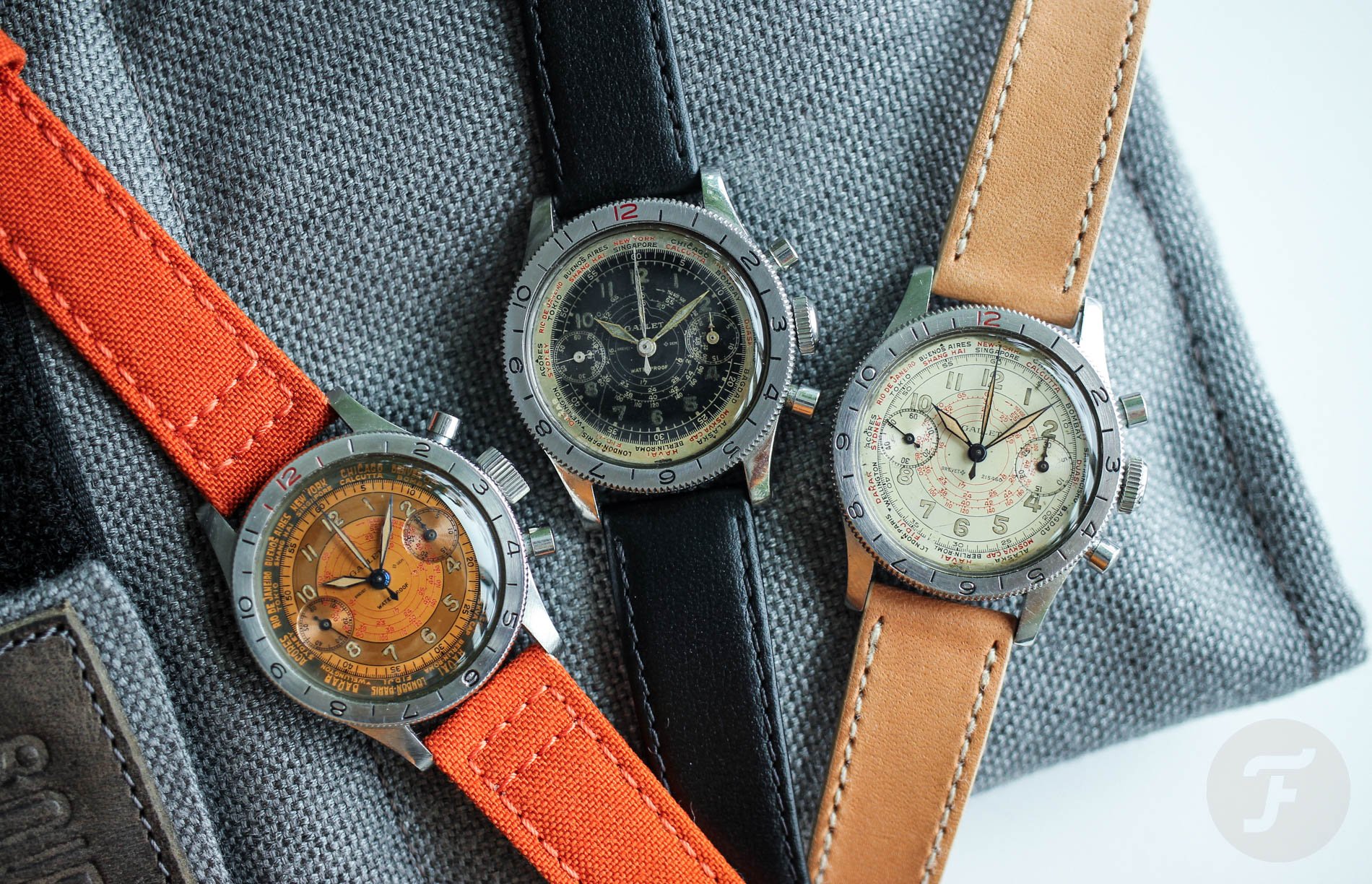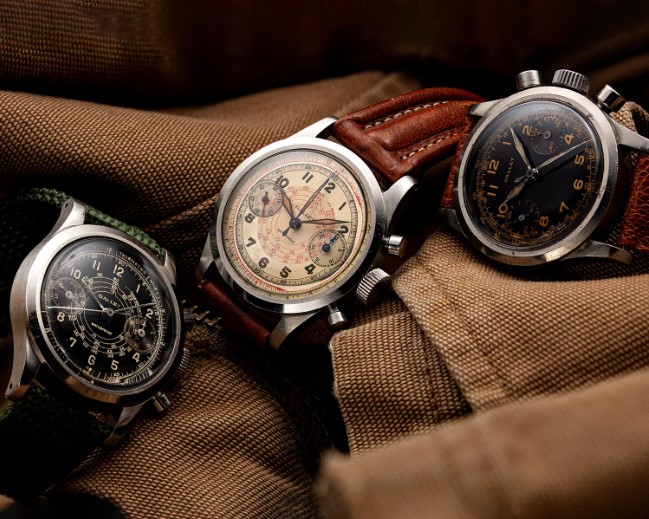Some notes on the oldest watch brands – Baume & Mercier 1830 (...1834)
From internet sources it may appear a bit unclear who really started Baume’s activities in Les Bois in the Swiss Jura mountains in 1830. Although the most common sources will start B&M’s story with the Baume brothers, if you dig a bit more you’ll find that Louis Victor and Pierre Joseph Célestin Baume were respectively 13 and 11 years old in 1830. Furthermore, the company was officially registered 1834 as “Frères Baume, La Famille Louis-Joseph”. It stands to reason that the real starter of this was the father Louis Joseph Baume. Quite sad that B&M’s own site won’t acknowledge his role, probably because the story of two brothers is more compelling…
Although the Jura region is one of the epicenters of Swiss watchmaking, the Baumes weren’t horologists. What they did is open a “comptoir” (a “counter”, i.e. a shop to retail merchandise). The name may suggest that they just sold watches, but as we know the Swiss economic structure based on “etablissage” could mean that the Baumes sourced different parts and had them put together for the final sale at their “counter”. Maybe this is the change which occurred in 1834, the passage from just retailer of third-party watches to assembling and selling own watches. But this is just my speculation.
In any case, their watches were successful and word about the brother’s quality products spread quickly. The Baume’s weren’t just good watch-makers, they were good entrepreneurs and saw that they had to make some moves to allow for growth.
First of all, they adopted new innovations and modern production methods to keep up with competition. In 1840, they introduced the Lepine calibre into their range along with the cylindrical escapement – both firsts in the Jura region of Switzerland. Although not a new concept, the slimmer movement enabled the brothers to manufacture a much slimmer and lighter pocket watch.
During this period, third and fourth brothers, Charles Auguste Feliciene and Josephus Eugene joined the business. But it was Feliciene that decided to move to La Chaux-de-Fonds, a watchmaking metropolis, to establish a workshop with modern machinery and methods that would enable the company to become more independent and not fall behind with advancing manufacture.
The second move was internationalization. In 1847 Pierre Joseph Célestin moved to London with the aim of expanding the business beyond the Swiss market and making himself independent of his distributors. In 1851 “Baume Brothers” is founded in Clarkenwell. The company quickly grew in the United Kingdom and the Commonwealth gaining a solid reputation for the precision and reliability of its watches, winning numerous international prizes and awards including ten Grand Prix and seven gold medals.

Additionally, the founders of the Baume watchmaking house decided to participate in the chronometry competitions organized by the Kew Observatory, with noteworthy results: the first year, three watches placed among the top 7 in the competition, the following year among the top 4. In 1893, the Maison triumphed in the competition with a pocket chronograph equipped with a tourbillon movement, also setting a scoring record that remained unbeaten for 10 years.

Meanwhile a second generation of Baume’s joined the family business. After horology apprenticeships in Germany, members of the family took over activities in Switzerland and London. In 1876, a new company “Baume & Co.” was established, clearly aimed at conquering the US market, which they entered through the Philadelphia World Fair in that same year.
The Baume’s established themselves solidly, meeting with thousands of visitors, winning a medal but most importantly they set up a representation of Baume & Co. in Philadelphia, opening the door to the country. The American watchmaking innovations that were on display were something of a shock to the Europeans as technically they were so far ahead of the Swiss methods of manufacture. Many companies, in particular, the British watchmaking industries could not keep up, but the Swiss, including Baume & Co, embraced the developments and transformed the challenges in renewed success.
1900 is a pivotal date in B&M’s “mythology”. It is in this year that then 15-year old William Baume, admiring the timepieces displayed at the Paris International Exhibition, decides that watchmaking is his destiny. So he started his apprenticeship with Mathey-Tissot, who was specialized in complicated watches such as minute repeaters and chronographs. 10 years later he inherited the business.
In 1912 William was to become acquainted with Paul Tchereditchenko, a Russian that had settled in Switzerland. He had been hired by Haas watchmakers of Geneva. His great business acumen and mastery of no less than seven languages soon found him as business manager. Once his application for Swiss citizenship had been approved, he was to take up his French mother’s maiden name – Mercier. At Paul’s request, William attended a business meeting in Geneva. He set off from Les Bois 'armed' with a briefcase full of Baume & Co timepieces.
The elegant Russian came across as being very charming and charismatic but also possessed a keen eye for quality. When asked which watches he was interested in stocking in Geneva, Paul replied that he would like to order them all for his store. Baume & Mercier was born.
You surely noticed I used the word “mythology”, and I used it for a specific reason. The history of the company in this period is quite turbulent and complex. Not only did the (several) Baume enterprises in England entertain distribution services for other brands as well (e.g. Longines), but most importantly, Willim Baume had a serious dispute with the family and practically left the family business to set up an own business as a trader in 1918. Then in 1919 he joined forces with Mercier.
Links between William Baume and Baume & Company in Britain had also been severed. In Britain Baume & Co. continued to sell watches made in the La Chaux-de-Fonds factory under the name “Baume”. Baume & Company did not import Baume & Mercier watches; in fact they took active steps to prevent the sale of Baume & Mercier watches in Britain.
So you see, when Baume & Mercier claim a founding date of 1830, this presumably refers to the foundation of Baume Frères in Les Bois, although that was actually in 1834, or it might be just a date plucked out of thin air. In addition, the only tenuous link that connects Baume & Mercier to the original Baume family business is William Baume, who left the Baume family company to set up on his own, while the rest of the family continued the original Baume Frères / Baume & Company business without him. It's not exactly a strong claim by Baume & Mercier to an unbroken record of watchmaking stretching back to the 1830s; they don't even get the dates right!
When founded in Geneva in 1919, Baume & Mercier was a completely new company. Rue Céard today is a pedestrianised area with high end shops, manufacturing would not have taken place there. It seems that Baume, then later Baume & Mercier, began as a sales and marketing operation without any manufacturing capability. This is understandable, because William Baume and Paul Tcherednitchenko / Mercier do not initially appear to have had the huge capital resources necessary to either set up or buy a watchmaking factory.
The rift between William Baume and the rest of the Baume family was so serious that when Baume & Mercier tried to export watches to Britain in the 1950s, legal action was taken against the British importers by Baume & Company to prevent this use of the Baume name.
In 1955, N. V. Hall & Son of Frederick Street began to regularly advertise that they were importers of Baume & Mercier watches. This continued until 1958 when A. H. Moore took over the import of Baume & Mercier watches. This was probably accompanied by increased promotion or advertising of the brand name, because it attracted the attention of Baume & Company.
Baume & Company took legal action against A. H. Moore on the grounds that the use of the name Baume on watches branded “Baume & Mercier” was an infringement of their own UK registered Baume trade mark. The action was initially unsuccessful in the lower Court, but the Court of Appeal reversed the decision and granted an injunction restraining A. H. Moore from selling watches under any mark or name containing the word Baume.
The judges in the Appeal Court held that there was a real possibility that watches marked Baume & Mercier would be regarded as being the same as, or in some way associated with, Baume & Company's watches. Under the law, “no man was entitled, even by the honest use of his own name, so to describe or mark his goods as to represent that they were the goods of another person”. The sound common sense of this principle and judgement is evident today, because many people are confused about the relationship of Baume & Company and Baume & Mercier now that Baume & Company are no longer around and Baume & Mercier are coy about the matter.
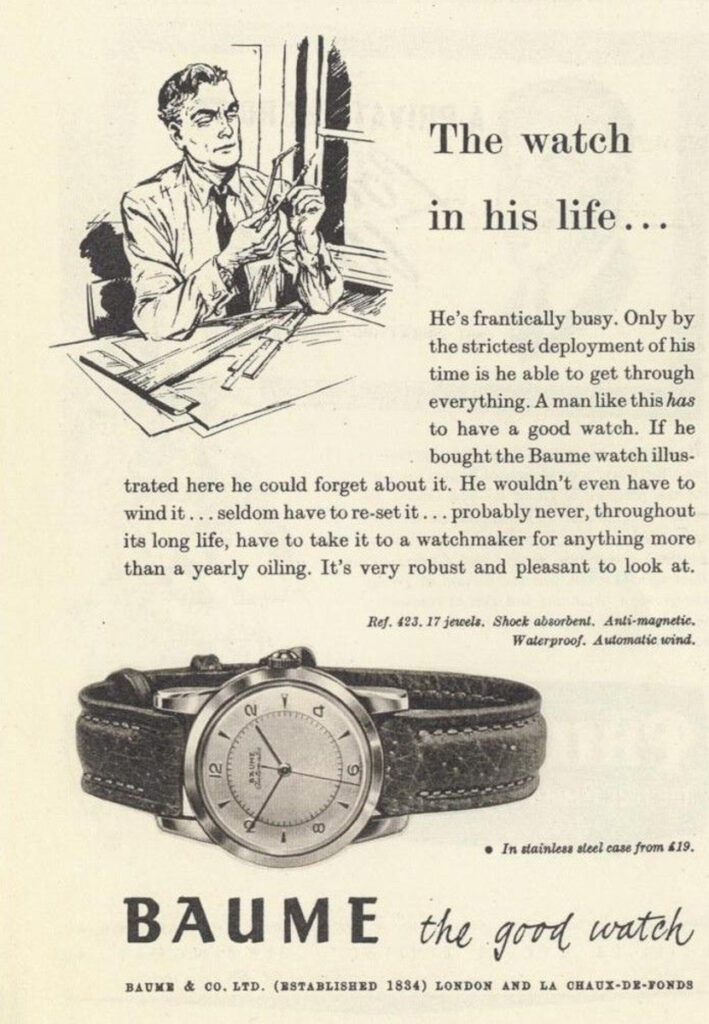
Leave to appeal to the House of Lords was granted but was not taken up. The effect of this injunction was to stop the marketing and sale in Britain of Baume & Mercier watches until Baume & Co. either agreed to allow it, or became unable or unwilling to enforce the judgement. Baume & Mercier had to wait until the latter happened in the 1960s.
Baume & Company Limited was acquired by Time Products Limited in the mid 1960s. Use of the name Baume & Company by Time Products ceased and the company became dormant. This left the field open for Baume & Mercier to finally enter the British market.
The earliest British advertisement for Baume & Mercier watches dates back to November 1968. The advert says that Baume & Mercier were “manufacturers of watches of outstanding quality & design since 1830”.
The date of 1830 given for the foundation of the company is an error, probably because Baume & Mercier didn't at the time have access to good, or even any, historical records of the company. There was no connection between Baume & Mercier of Geneva and the original Baume company of Les Bois, London and La Chaux-de-Fonds, so archives of records would not have been passed between the two companies.
In any case, William Baume and Paul Mercier didn’t live enough to see any resolution. In fact, William (the technical guy) left the business in 1935 for health reasons, while Paul continued for another couple years. Neither of them left natural heirs, so all the shares were passed to Ernesto Ponti, a new business partner.
The brand’s fortunes evolved over the years until, in 1988, Baume & Mercier became part of the Vendôme Group, now Richemont.
Despite the internal feud and differentiation between Baume & Co and Baume & Mercier, all timepieces which make the brand’s history in the modern era are due to the latter’s activity. The brand made its modern-era fortune on the wave of women emancipation. The models produced were predominantly lady’s watches.

During the 1930s and 1940s Baume & Mercier focused on the production of chronograph watches and iconic rectangular-shaped timepieces


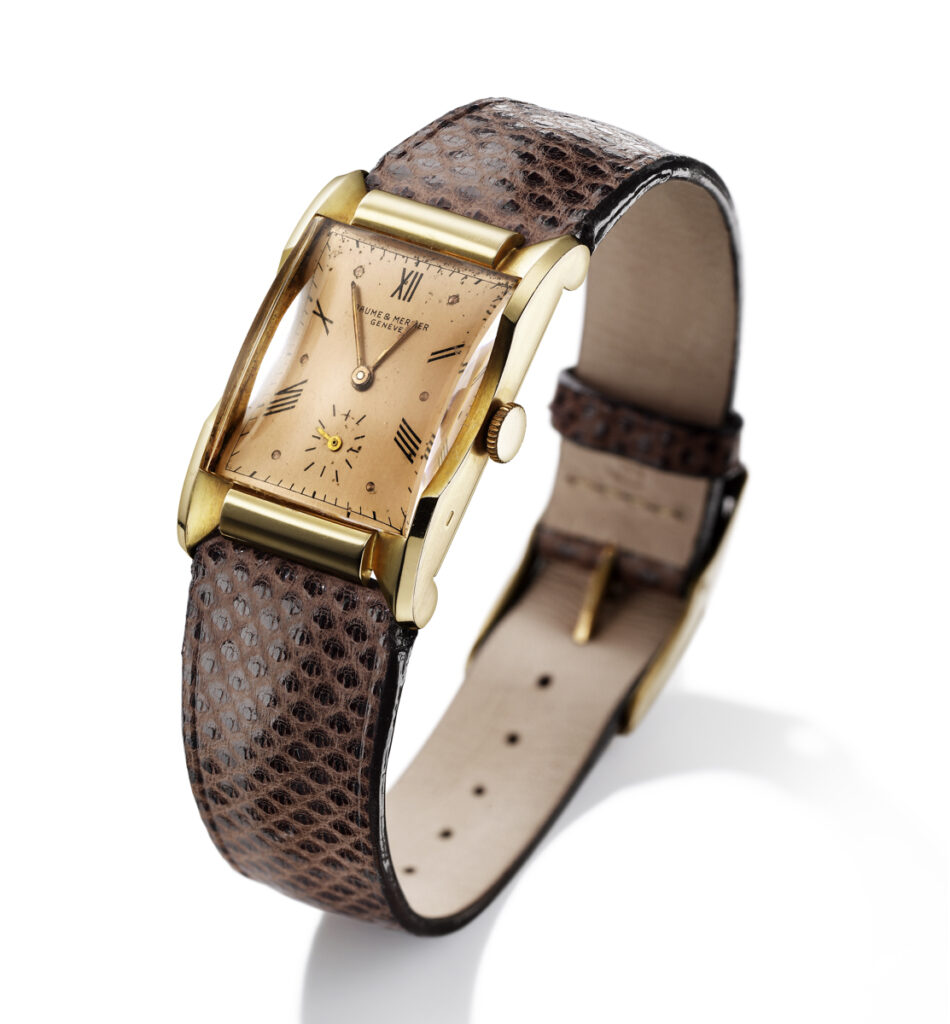
The Marquise was presented in 1946. Its unusual shape and slave-style bracelet made it an example of originality and modern elegance. The Marquise was the Maison’s best-selling watch until the 1960s, cementing Baume & Mercier’s reputation in the world of women’s jewelry watches.
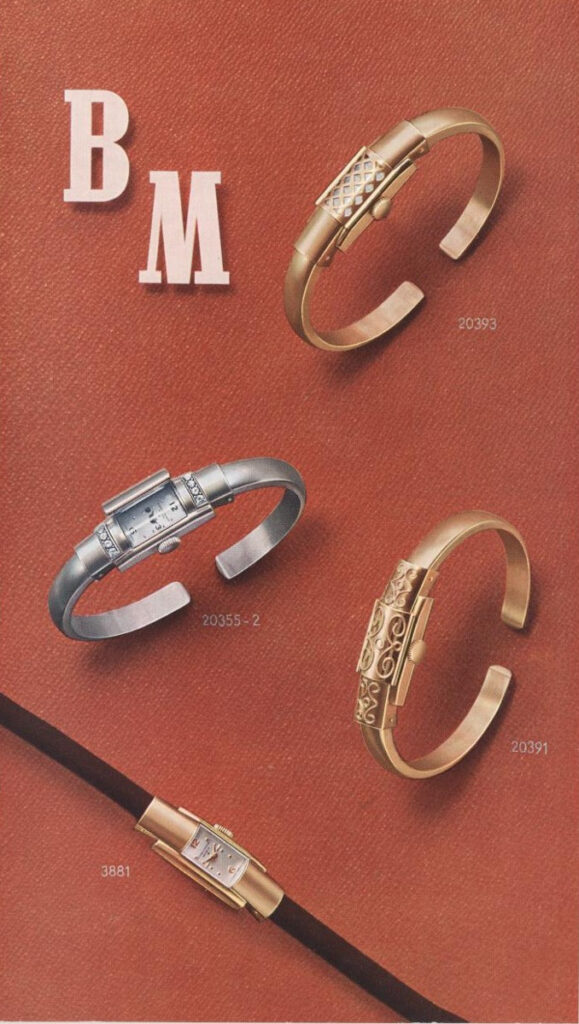
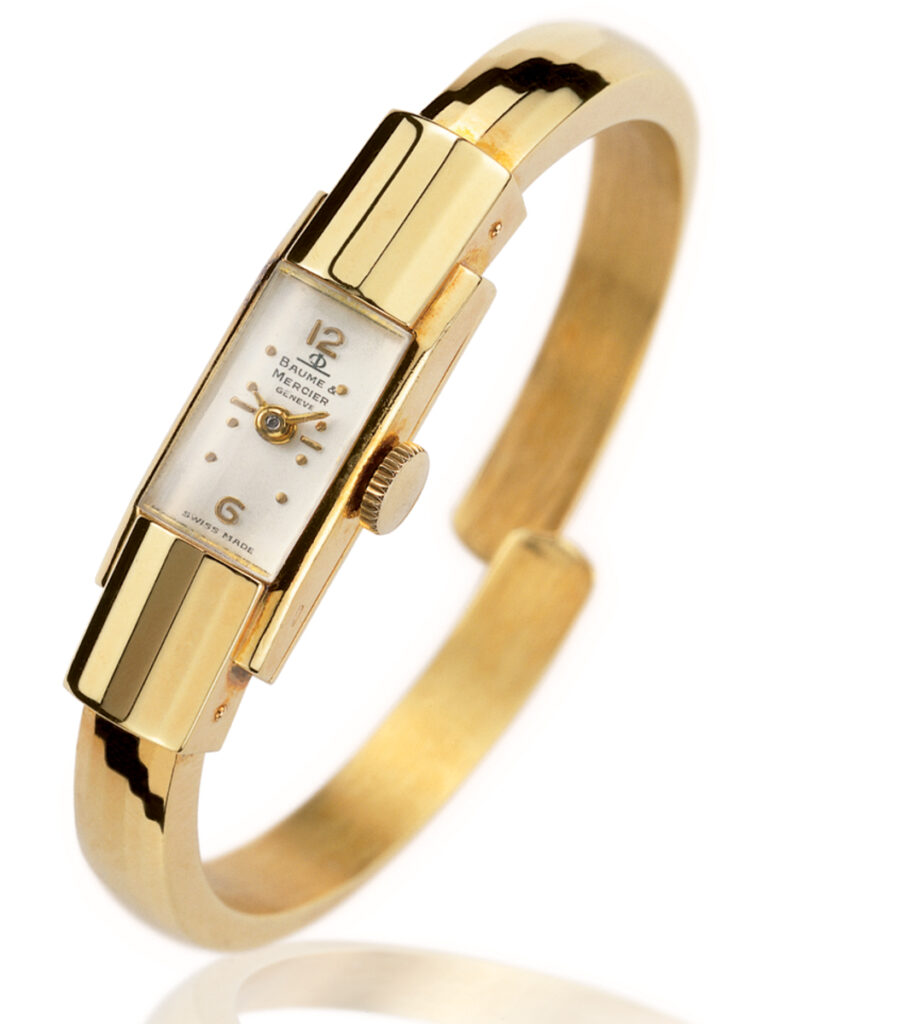
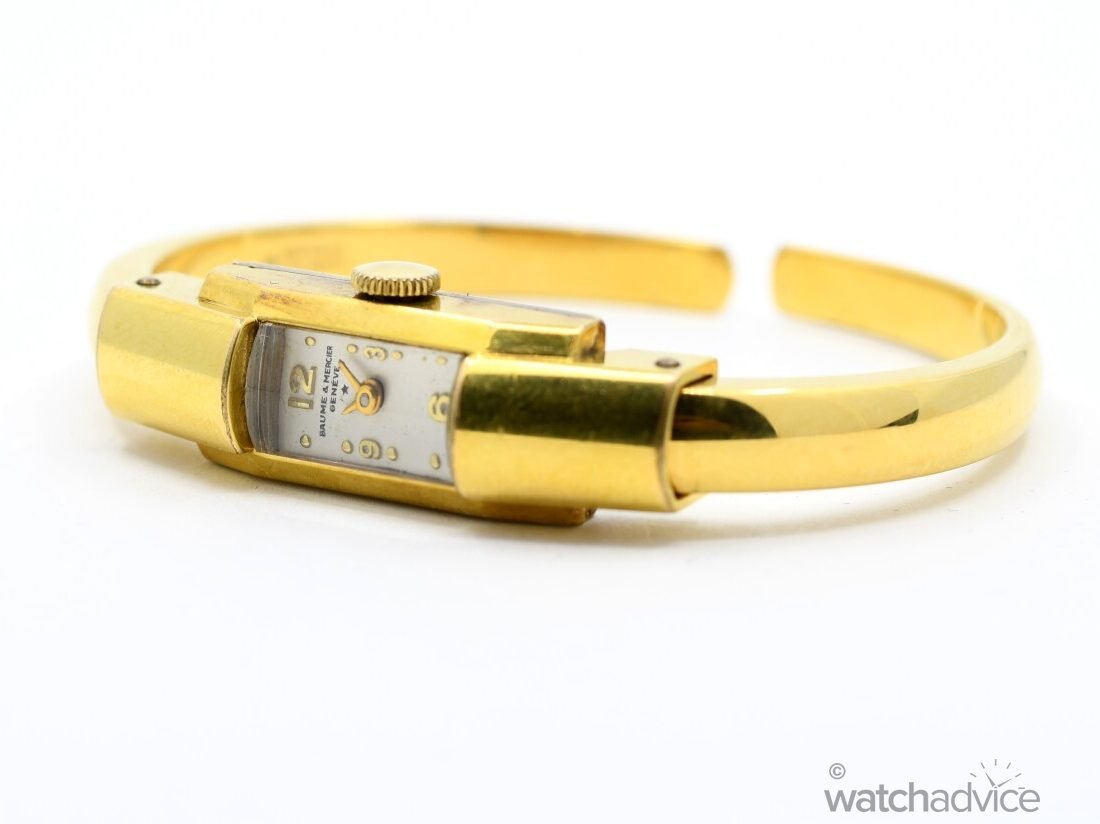
In the early 1960s, highly dependent on markets in the United States and Italy, the company forged relationships with Piaget, which enabled it to obtain ultra-flat gauges and expand its sales network. In 1964, Piaget acquired a majority stake in the company. This enabled Baume & Mercier to afford huge investments, which came to fruition in 1968 with the creation of the Planetary Rotor, which, thanks to its innovative oscillating mass, enabled the creation of the thinnest automatic calendars of the time.
Fast-forwarding to 1971, we enter the electronic era with the Tronosonic. This model, equipped with a pre-quartz tuning fork movement, marked an era for its precision, exceeding that of the best mechanical mechanisms by ten times. A true milestone for Baume & Mercier, leading watchmaking into a new era.
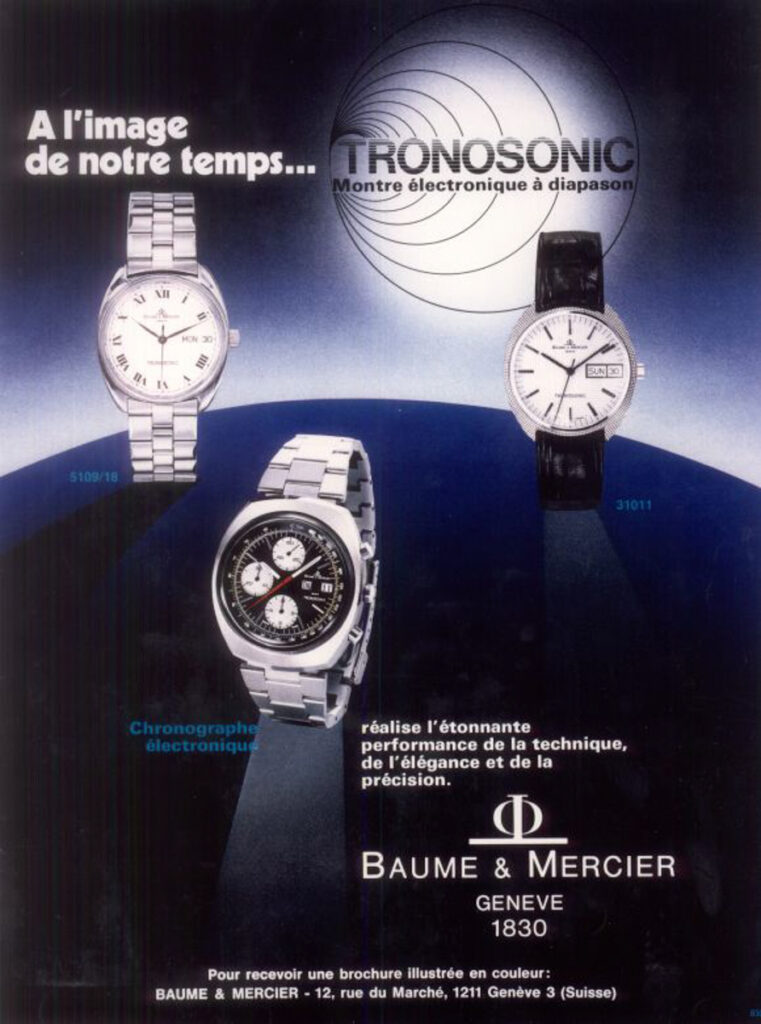
In the 1970s B&M also offered the Stardust (with onyx dial embellished with 138 diamonds), Mimosa and Galaxie creations, more jewellery than watch…


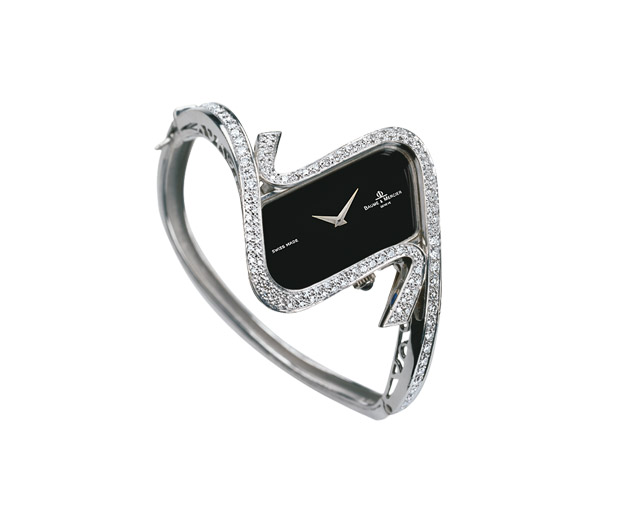

In 1973 the Riviera made its debut, immediately establishing itself as Baume & Mercier’s flagship model for the next 25 years. The historical context is positive, the need for good living is gaining momentum, and as a result, the desire to devote time to sports and outdoor activities is also gaining ground in affluent circles.

With a dodecagonal-shaped case and bezel, a first in watchmaking, and its avant-garde design, the Riviera wins over a new clientele looking for an innovative way to express an elegant and dynamic attitude. The name itself, Riviera, evokes the glamorous and relaxed art de vivre of the French Riviera as declined in sports, leisure and professional life.
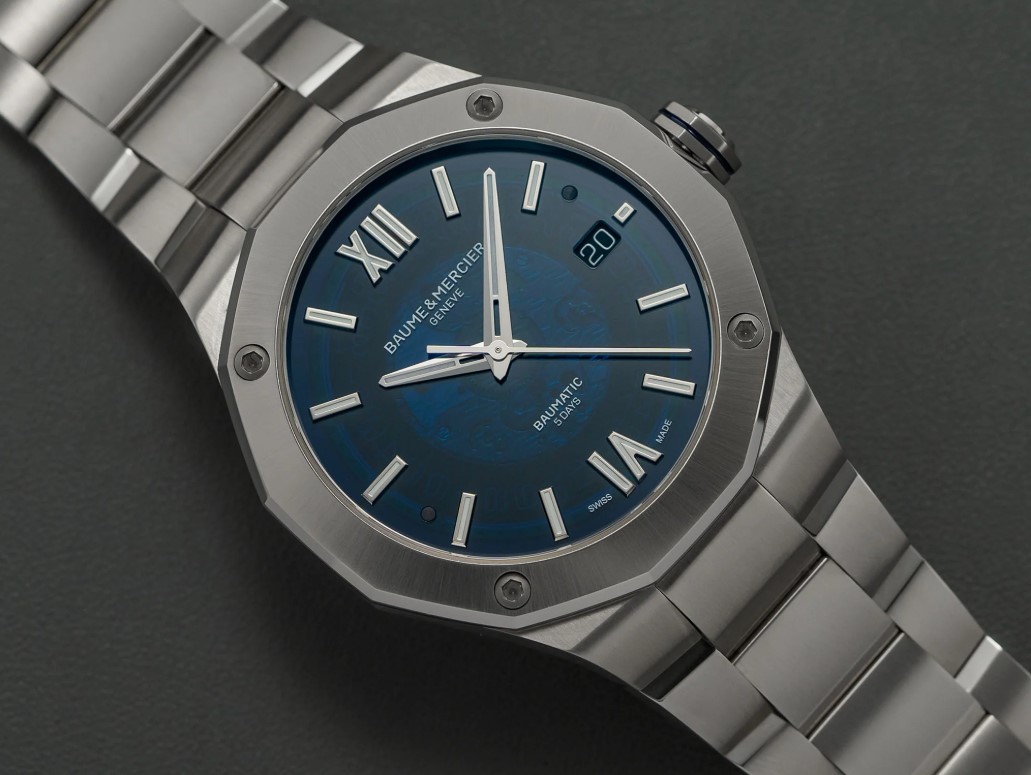
Contrary to the fashion of the time, which offers ceremonial watches in gold, Baume & Mercier in fact chooses steel for the Riviera, which makes the timepiece suitable for various occasions in one’s lifestyle, without sacrificing reliability and durability.
Over time, the watch is enhanced with various complications and declined in different metals and (meanwhile disputable) variations.
In 1994, Baume & Mercier introduced the Hampton model, which broke new ground for the brand in the shaped steel watch market. Its flowing lines revisit traditional design with a modern aesthetic, and the slightly curved case conforms to the wrist to provide better comfort. The name Hampton recalls the American seaside resort The Hamptons near New York City, synonymous with a chic lifestyle away from the hustle and bustle of the city. Originally created as a time-only, the watch was later declined into chronograph, dual time and power reserve indicator versions.

The Catwalk, introduced in 1997 as “a bracelet that is also a watch,” revisited the concept of the watch-bracelet, becoming a style icon for Baume & Mercier. Originally with a polished steel bracelet, the Catwalk was offered in variants with rubber or leather straps. This model would almost seem to be a conceptual evolution of the Marquise, projected into the modern era. The concept of a bracelet watch remains, but the slim and extremely elegant cut is replaced by a more robust and durable bracelet, consistent with new consumer demands.
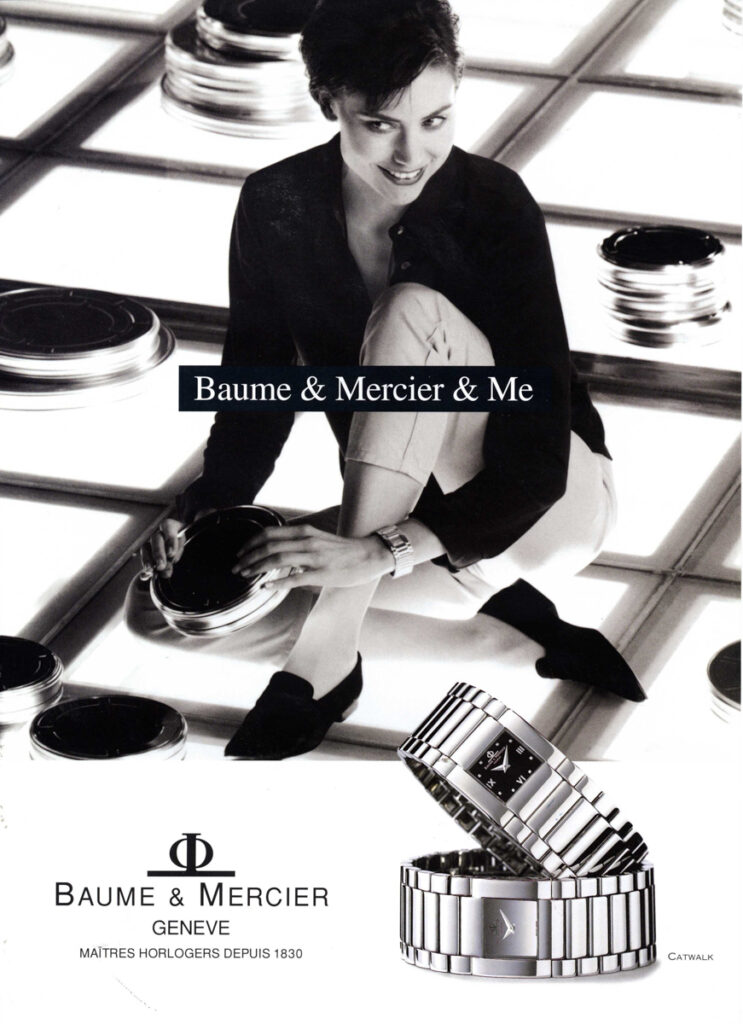

In 2013, B&M introduces an entirely new collection. Characterized by clean lines and clear, legible dials, the Clifton collection ranges from simple models with time-only functions to complex chronographs and complications such as full calendar and power reserve. Often inspired by the design of vintage watches from the 1950s, this line combines Baume & Mercier’s watchmaking heritage with modern technology, as evidenced by the inclusion of the Baumatic caliber made in 2018.

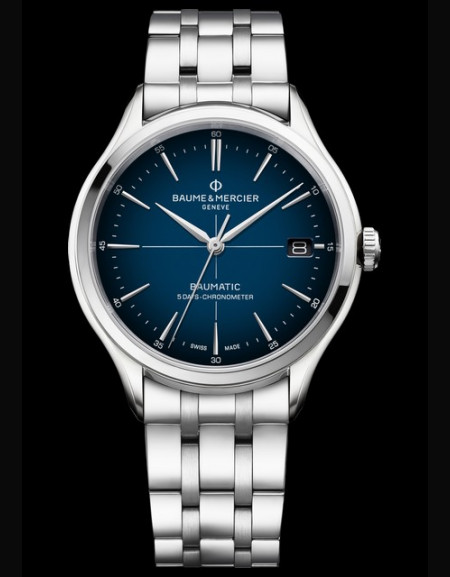
In 2018 Baume & Mercier, presents a significant innovation in the field of watchmaking, being the first automatic mechanical movement developed in-house by the brand. It is distinguished by its high energy efficiency, ensuring a 5-day power reserve, precision that meets COSC standards, and resistance to magnetic fields up to 1,500 Gauss.

